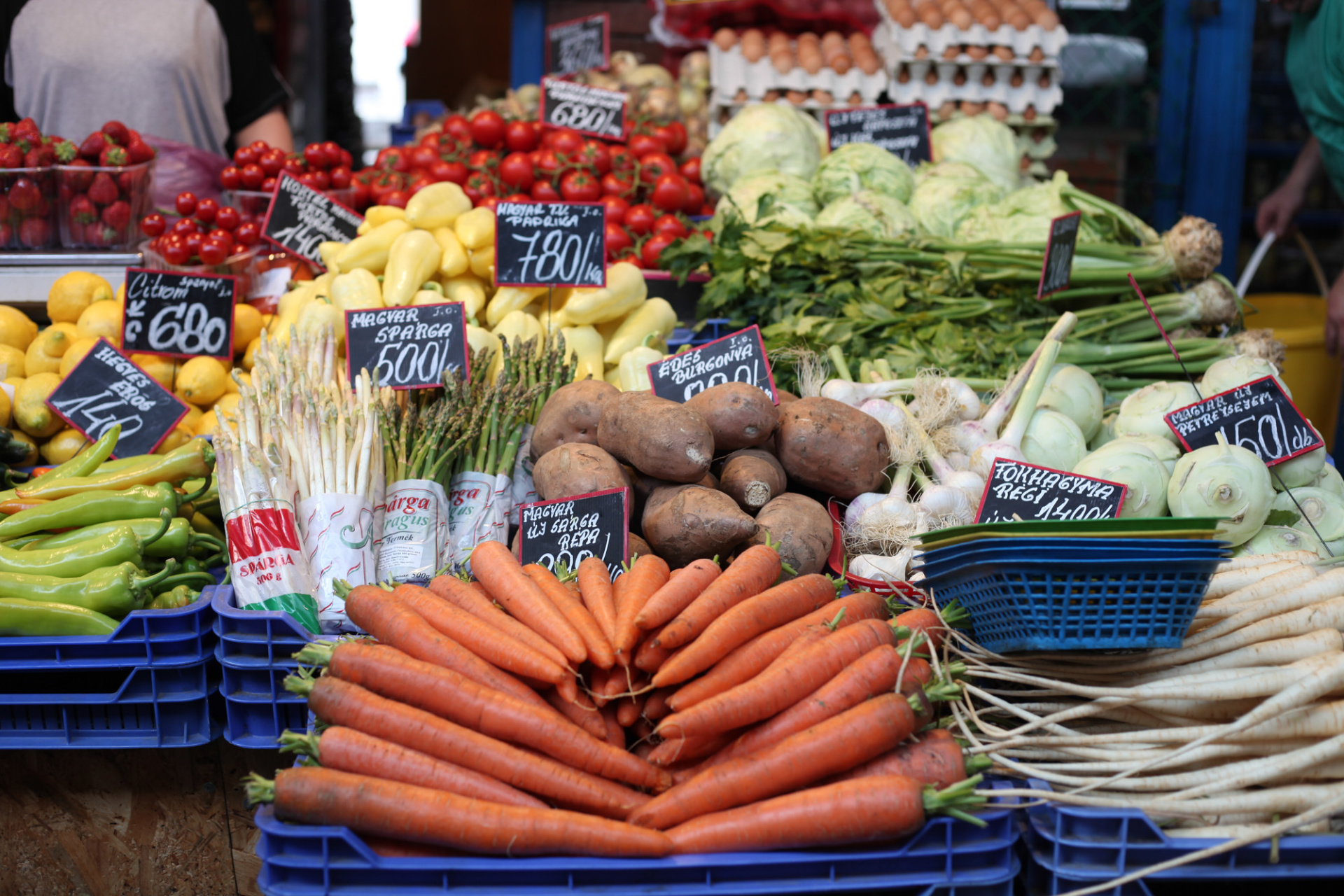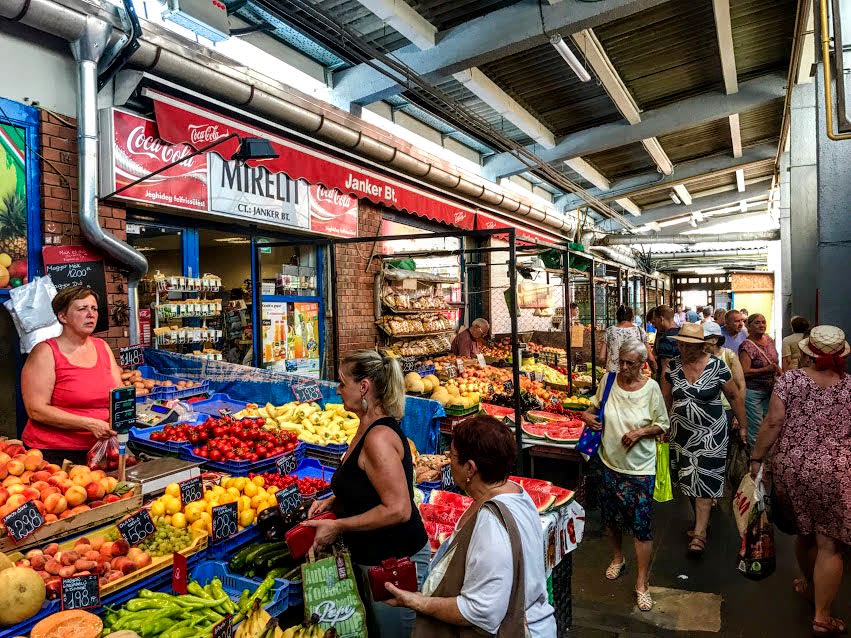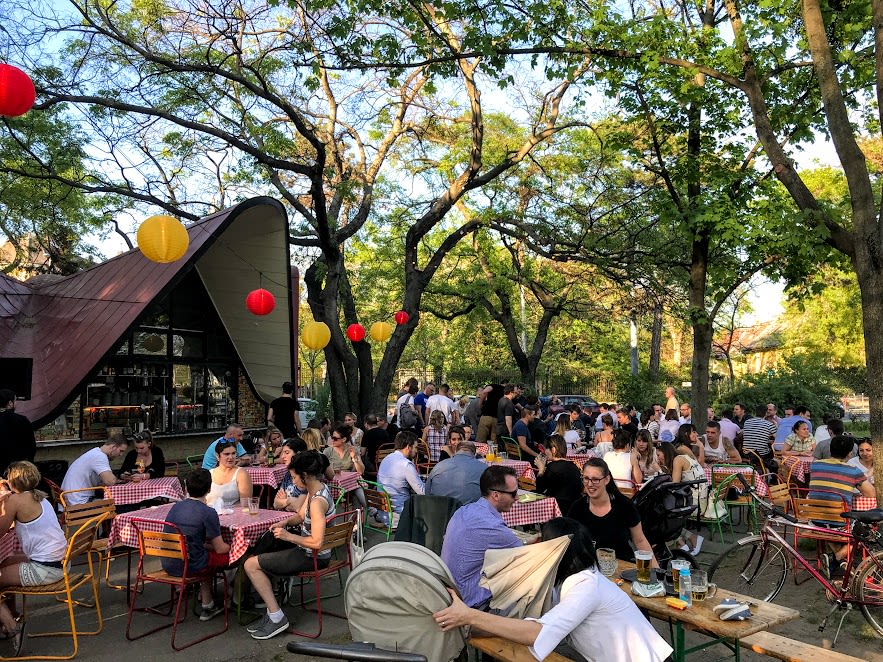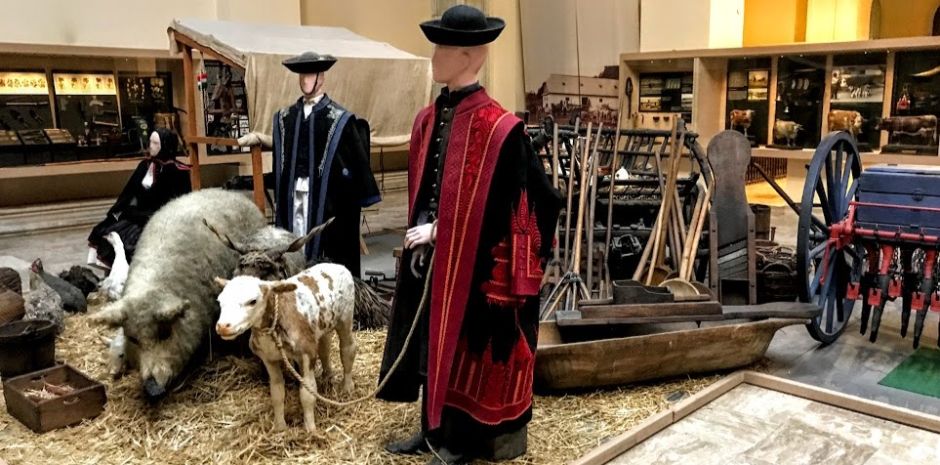Zugló is located a bit outside Budapest's city center, but a beautiful housing stock, the lively Bosnyák Market, and the City Park can make a trip worthwhile.

Use this map to find all places mentioned in the article below.
Zugló is known for the City Park (Városliget), home to tourist attractions such as Heroes’ Square, Vajdahunyad Castle, and Széchenyi Baths, but there's more to it than just the park. For a deeply immersive experience into everyday Budapest life, I recommend you visit the Bosnyák Square Market, ideally on a Saturday morning.
Take one of the many buses from downtown, and in 20 minutes you'll be within the confines of this decor-deprived, lively space, which couldn't be more different from the pristine Great Market Hall in the city center. Here, you won't need to worry about being pushed aside by fellow tourists, the price points will make you double-check your currency conversion rate, and vendors will give you the time of day. Pick up some seasonal fruits, vegetables, or paprika-laced salami along the way. Note that the independent farmers are in the back of the space.

If you're hungry, try the sausages or the roasted pork knuckles at the nondescript butcher shop next to the main entry. There's also a lángos stall inside, serving made-to-order, deep-fried flatbreads topped with sour cream and grated cheese.
When you're done, dart across the street and take a bus back toward the city center, getting off at Cházár András utca, not far from the City Park. This area is teeming with beautiful houses hidden on quiet side streets. Zugló's fresh air and proximity to the city drew Budapest's upper crust in the late 19th century – first, they built summer homes to escape downtown's heat waves, then many moved out here permanently. During the Communist era (1947-1989), these lavish houses were nationalized and parceled up into smaller apartments, or became consulates as many of them still are.
The red-bricked Art Deco building on the far end of Cházár András Street is one of Budapest's top high schools (before WWII, it was a Jewish school, hence the Star of David and the delicate menorah patterns on the facade). Turn right, and saunter down Abonyi Street, taking in these handsome mini palazzos along the way. My favorite eye candy is the medieval castle-lookalike on the corner of Abonyi and Zichy Géza Streets, imposing even in its current state of disrepair.
If you enjoy Art Nouveau architecture and don't mind a 10-minute detour, turn right and onto Stefánia Road to reach the Geological and Geophysical Institute of Hungary. Designed by Hungary's famous architect, Ödön Lechner, the impressive building features curvilinear motifs and Hungarian Atlas figures atop the light-blue ceramic roof.

Zugló isn't exactly known for its thriving restaurant scene, but Szaletly, a modern Hungarian restaurant near the City Park is an excellent choice. (If you prefer high-end Chinese food, try Wang Mester Konyhája). In the City Park during the warmer months, I like to stop by the adorable Pántlika Bistro for a beer and a snack.
Széchenyi Baths is just a stone's throw away from here, in case that's your thermal bath of choice. The City Park is also home to the Vajdahunyad Castle, a bombastic building modeled after, among others, a Transylvanian medieval castle. Inside it is the Museum of Hungarian Agriculture, which doesn't sound like a must-see but it has a fascinating permanent exhibit in all of its quirkiness; we even wrote an ode to the museum. The recently completed House of Music and the Museum of Ethnography are both must-sees for architecture fans.

Don't leave Zugló without seeing Heroes' Square, a sweeping plaza peppered with historic Hungarian figures and a triumphal column. Two major museums flank the square: the Museum of Fine Arts has a world-class collection of Italian Renaissance paintings while the Műcsarnok (Kunsthalle) is best known for its high quality temporary exhibits.
From here, you can take the century-old Millennium Underground / M1 back to downtown, or, if you have limitless energy, first visit the Budapest Zoo, just steps away. Not far from the Zoo's entrance is Édes Mackó, a kürtőskalács vendor that cooks these caramel-glazed chimney cakes the traditional way – over charcoal.
My content is free and independent. If you've enjoyed this article, please consider supporting me by making a one-time payment (PayPal, Venmo).